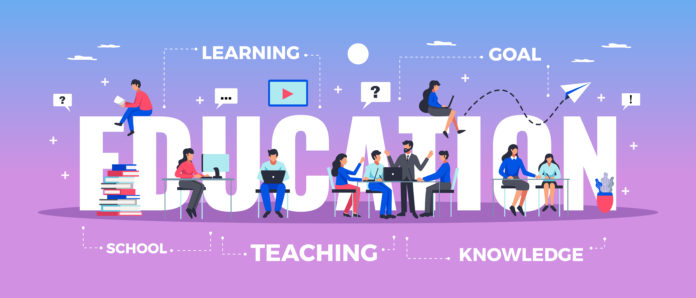Learning would have endured a greater disruption if it had not been for the educational technology (EdTech) industry and its players.
Although we were limited in our physical movement for the past two years, technology enabled us to move forward as a society. Health care was made more accessible with MedTech. FinTech made it easier for us to do online shopping and cashless transactions. EdTech assisted educators in leveraging technology to ensure learning continuity.
Educational technology is not a new industry and has been gaining momentum even before the pandemic. Like other tech-related industries, the industry experienced an accelerated growth owing to the pandemic.
EdTech: A Money-making industry
According to the Grand View Research, the global EdTech market was worth $106.5 billion in 2021 and is expected to expand at a rate of 16.5% between 2022 and 2030. The ‘Global EdTech Market Outlook & Forecast Report 2022 – 2027’ valued the industry at $254.8 billion in 2021 and estimated that it will grow $605.4 billion by 2027.
China – the world’s largest market for EdTech was worth approximately 257.3 billion yuan ($38 billion) in 2020 alone, a surmountable 35.5% increase from 2019. India valued its EdTech industry at $750 million in 2020 and estimates that it will grow to $4 billion by 2026, making it one of the fastest growing industries in the country.
This exponential growth is not without its issues.
China says ‘Thank You Next’ to EdTech
Last year, the Chinese government unveiled a new department under the Ministry of Education – the Department of Supervision Off-Campus Education. The Department abruptly introduced a national effort to curb the rampant exploitation of parental paranoia and China’s brutal study culture by the unchecked players of its EdTech market. The government’s intention was to overhaul the education sector it says has been “hijacked by capital.”
This ‘Double Reduction Opinion’ by the Chinese government had an immediate effect on global EdTech market. TAL Education, Gaotu Techedu, and New Oriental Education collectively lost $100 billion while two of the world’s largest EdTech for-profits: Yuanfudao and Tiger Global-backed Zuoyebang saw their valuations shrink to almost nothing. HolonIQ estimates that the $23 billion venture capital investing in the industry within the last five years, will quickly vaporize.
EdTech Stop Calling India
“… Trust me I am pushing my daughter to start learning coding, and do IIT JEE preparations with you guys, but she is just not willing to do so. … So, please stop calling to sell these plans/devices,” wrote Prashant Sharma on LinkedIn.
Sharma’s encounter with the EdTech industry in India, is not unique. Following his post on LinkedIn, parents from across the country shared on social media similar situations. Some highlighted the disparity between the cost and quality of the product, others noted the poor quality of teachers, and many like Sharma shared their frustration about the predatory marketing practices adopted by EdTech firms.
These challenges have left many parents disinterested in enrolling their children or themselves in any EdTech-related platforms.
An Uncertain Future
The challenges experienced by the EdTech industry in China and India raises a vital question: does EdTech have a future in our post-pandemic and hybrid world?
“It is almost impossible to think about education and training without thinking about technology because technology is so much a part of us, a part of our lives, whether you are an adult or a child. And because of that, you have to consider technology in learning,” said David Yeo, CEO of Kydon Group and ZilLearn.
Prior to the pandemic, learning technologies such as the Learning Management Systems (LMS), Massive Online Open Courses (MOOCs), and Learning Experience Platforms (LXPs) enabled educators to upload their in-person lecture or training materials for learners to revisit and learn at their own pace.
Additionally, the invention of tablets and smartphones, and the arrival of social media platforms like Instagram and Tik Tok revolutionized the way learners create and consume content.
The gradual adoption of learning technologies to improve the global learning experience was pushed into overdrive when the COVID-19 pandemic struck in early 2020.
“Technology has arrived faster than L&D practitioners can train people to be skilled enough to handle the technology,” shared Thomas Paris, Chief Learning Architect of Kydon Group and ZilLearn at the LEARNTech Asia Conference 2021.
This is when educational technology players – big or small – stepped in to bridge the gap between offline and online learning. They demonstrated how technology, when utilized correctly, can serve as a powerful tool to make learning more personable, scalable, and sustainable for learners.
Evidently, educational technology has made significant contributions to the global learning landscape especially in critical moments like the pandemic.
Back to Basics
In a post-pandemic world, hybrid learning is becoming increasingly mainstream. Once again, educators and learners have to adapt their teaching and learning styles to a new learning environment.
As the core function of educational technology is to leverage technology to improve learning outcomes and respond to the changing needs of educators and learners, EdTech players should seize the opportunity to re-establish themselves as fundamental players in the global learning landscape.
“Today’s EdTech is creating a stronger link between what happens inside and outside the classroom. By making digital educational resources available at all times through apps and internal learning platforms, teachers are able to create a series of ‘touch points’ in a student’s learning experience so they feel a greater sense of support,” said Simon Freeman, Managing Director for Education at IRIS Software Group.
Learning technologies are not limited to “softwares” like AI- and Big Data- powered learning platforms, Extended Reality (XR) tools such as VR headsets, and cloud-based systems such as Zoom and Microsoft Teams. It includes “hardwares” such as electronic whiteboards, whiteboard cameras, bluetooth or wired headsets and webcams, tablets, and smartphones.
Collectively, the “soft” and “hard” learning technologies can be utilized to merge offline and virtual learning and create an effective hybrid learning environment. Moreover, these technologies enable educators to create collaborative, social, and/or personalized learning spaces depending on the learning outcomes.
Indeed, the rapid expansion of the EdTech industry during the pandemic may have resulted in some unwanted consequences. These consequences are related to the industry’s business model rather than the fundamental role of Educational Technology.
We believe that EdTech will remain a crucial player in the post-pandemic and hybrid world. If we are willing to wield technology for the right purpose(s), the EdTech industry is bound to positively impact society.




